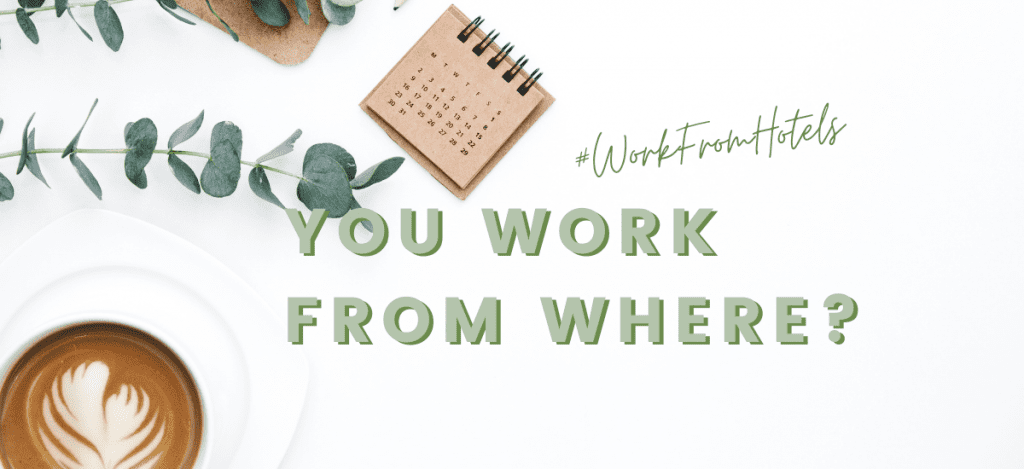

The pandemic-inspired ‘Work from Hotels’ trend has legs. And arms. Here are some ideas where it’s headed.
“Remember when it was so exciting to be able to WFH – work from home?” asked an opinion writer in The Guardian last August about the sea change in work habits that has seen offices close as a result of COVID-19. Reviewing the concept’s typical glitches – “nightmare” childcare, less-than-reliable home broadband, cramped domestic workspaces – he observed that, despite the appeal of no commutes and a better work-life balance, “I’m picking up a distinct impression that the novelty of WFH has begun to wear thin as we realise that the pandemic might turn out to be a very long haul indeed.”
Though there is now light at the end of the tunnel, the pandemic will, indeed, be a haul for some time. And as pre-pandemic veterans of working from home know, the arrangement has always had the potential to wear thin, which is why freelancers have long relied upon coffee at 4am, matinees at noon, and cocktails at 5pm (sharp) to get through the day.
It’s also why as the pandemic wreaked havoc last year, the hospitality industry began marketing its own twist on ‘WFH’ – work from hotels. Following an initial rush to enhance on-property health and hygiene standards for the safety of guests and staff, hotels have been offering themselves as settings for people to peel away from home and heighten their productivity in sweet privacy, with attentive services and onsite opportunities for wellness, dining, and even socializing to make the experience even more inviting.
Hyatt, a client of our affiliate agency Maverick Creative, was in early on the WFH trend, launching Work from Hyatt in August and expanding it in October, with distinctive offerings for locals to work onsite for a day and for travelers to stick around for a while. Media have taken notice, not least T: The New York Times Style Magazine, which ran a piece in December noting the stylish workspace offerings available at hotels including our Dorchester Collection client Hotel Principe di Savoia in Milan, as well as Maverick’s The Beekman in New York City (of which see more in the margins here) and various Hyatt hotels; and Forbes, which recently spotlighted the Your Bel-Air Office package from Dorchester Collection’s Hotel Bel-Air in Los Angeles. Other major hotel groups including Hilton and Marriot also have WFH programs, as do smaller brands and independent properties including a number of our clients, also highlighted here.
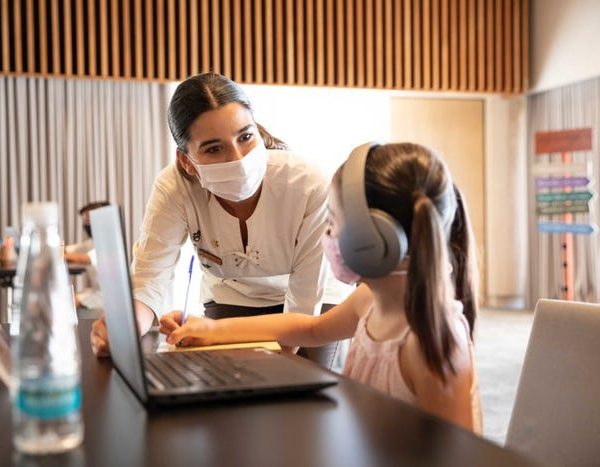
In September, Montage Hotels & Resorts launched Montage Academy, a resort-based, back-to-school program to enhance distance learning for families with children being schooled remotely. Available at Montage properties across the US, the program includes an all-day monitored study hall and educational programming including elective activities for kids, as well as downtime for parents to stay on top of work or relax while enjoying onsite luxuries.
But wait a sec – haven’t hotels always catered to hard-working business travelers? “Yes, but this is different than in the past,” noted Leora Lanz, ISHC, Associate Professor of the Practice and Faculty Chair of the Master of Management in Hospitality program at Boston University School of Hospitality Administration. “Now what hotels are offering is being thought of as a service, an escape, even a rescue. Think of the parent who is juggling a household, remote schooling, and their job from home during a pandemic. They could use a hotel day pass to reset and focus, get some work done and get some exercise.”
WFH offerings are helpful in the same way as social responsibility efforts, Lanz added. “I’d encourage hotels to package them that way.”
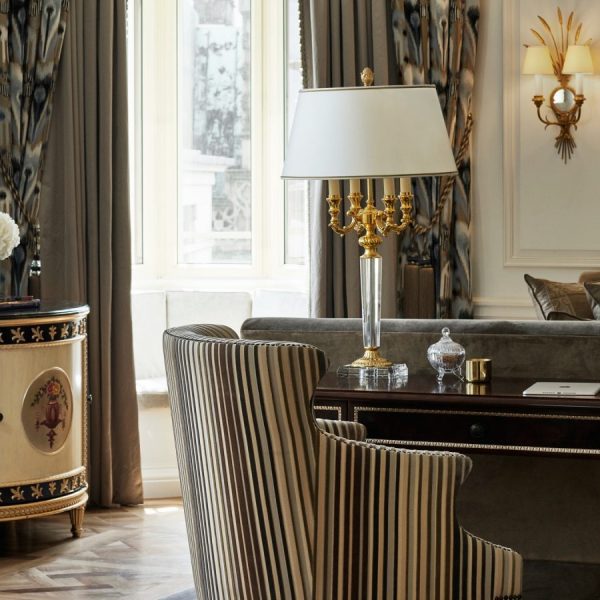
The Working Away package from Dorchester Collection transforms spacious suites into luxurious, fully functioning workspaces for daytime use with $100 spa and dining credit, on-call IT concierge, working area with stationary, and unlimited tea and coffee included. It’s available at the DC’s iconic properties in London, Rome, Milan, and Los Angeles.
Though the pandemic-related downturn in hotel bookings was the spark for WFH, the trend has actually been building for years. Tea Ros, managing director of Strategic Hotel Consulting in Switzerland with clients throughout Europe, the Middle East and Asia, said people have been interested in using hotels like offices for some time, but hotels haven’t necessarily been good at capitalizing on it.
“Before COVID-19 there was the trend to get people to come and use lobbies to work. Then the pandemic arrived and threw everything upside down and the idea became to rent rooms as office space as an emergency measure. With institutional requirements in Europe for people to work from home, hotels realized this could be an opportunity and they began getting creative.”
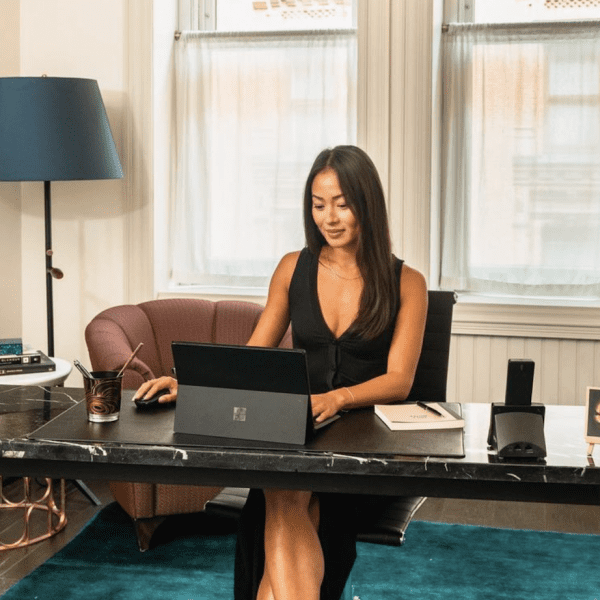
The Beekman, A Thompson Hotel in NYC recently unveiled The Raven, a private members-only club whose name is inspired by the building where Edgar Allan Poe once published work. Geared toward locals and corporate partners, it offers a luxury hotel setting for work with perks such as in-office dining by Celebrity Chef Tom Colicchio’s Crafted Hospitality, state-of-the-art fitness with Peloton Bikes, full-service Business Concierge, and use of rooftop terraces.
Ros noted properties that are removing bedding from standard guest rooms, converting loft rooms into office space to make them functional for small teams, and offering corporate subscriptions to get companies onboard. “Companies that are reducing office space can put the savings toward hotels to benefit their employees,” she said, cautioning, “It’s not always a viable option for every hotel to convert one-third of their rooms into workspace.”
Whatever model hotels employ, amenities, perks and services are important elements for drawing and maintaining reliable WFH clientele. Lynn Curry, president and co-owner of the US arm of RLA, a global consulting firm focused on spas and wellness, said she is seeing a lot of properties promoting a wellness aspect as part of their WFH offerings – particularly those at the high end. “Luxury travelers, don’t want a deal, but they do want wellness, and the pandemic has made that even more important because people are better at fighting off disease when they’re happy and healthy.”
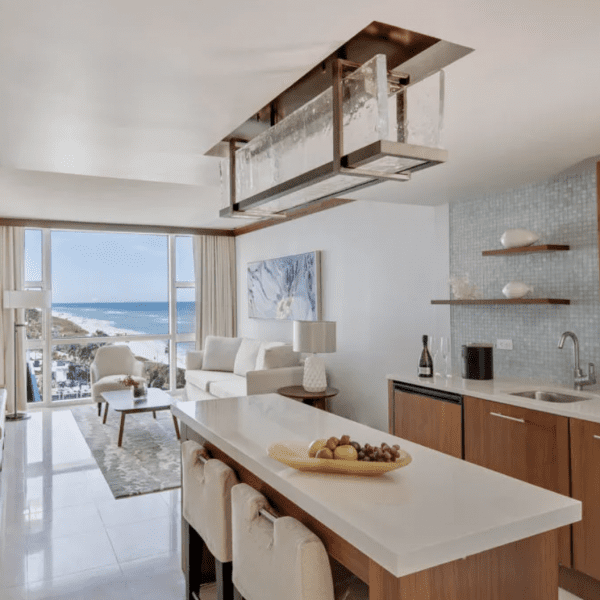
The new Stay Awhile offer from Carillon Miami Wellness Resort provides comforts of home for work in a luxury apartment, with optional add-ons such as workstation with a standing desk, executive office chair, and assistance from a Tech Concierge. Guests can also upgrade to a wellness office with a fitness bike or treadmill workstation, and everyone gets access to the resort’s award-winning 70,000 sq. ft. Wellness Spa.
The more wellness possibilities a hotel can provide, the better for their WFH guests, she added, noting everything from access to nature to educational programming such as cooking and cocktail classes with the culinary team. “Working from a hotel is appealing to many people because it provides them with access to things they can’t do where they live. They want to know elements of fun and adventure will be available to contribute to their well-being through their workday.”
Curry’s son Adam recently embarked on his own WFH experience. A 23-year-old Associate Product Manager specializing in technical development for a financial tech company, he stopped working at the corporate office in San Francisco during the early rounds of lockdowns and hit the road with a buddy when the lease ran out on his pricey apartment in October. “San Francisco was more strict than most cities, and the reasons one pays so much to live there were no longer available to me.”

Along the Caribbean in the Riviera Maya of Mexico, Palmaïa, The House of AïA is attracting busy guests for long-term stays with a Beachfront Wellness Work-Away package with a host of luxury- and wellness-focused amenities and services – from a weekly private meditation session with a personal growth guide, to Waldorf-inspired educational activities for children – plus accommodation in a fiber-optic-powered suite on a natural, white-sand beach.
Budgeting tightly, Adam and his friend took advantage of hotel deals and “absurdly cheap flights” to head first to the Northeast, then to the Mid-Atlantic, the Midwest, and South before finally arriving in Sayulita on the Pacific coast of Mexico. He got a lot done for work along the way. “I worked the entire time, taking calls and churning out whatever was needed.” While workspace settings varied by property, Adam quickly discovered that the keys to success for WFH were “reliable Wi-Fi and a quiet place to talk. I also could’ve used a second computer monitor. That would’ve made me as effective as working in the office.”
So – is WFH going to be part of the panacea for the hard-hit hotel industry? Associate Professor Lanz says that while it’s too early to tell, hotels would do well to focus WFH offerings on their communities. Indeed, when students in her advanced marketing class worked directly with hotels in Boston over the summer semester just past, one of their recommendations was to capitalize on the WFH trend by targeting offerings to locals, most of whom one assumes are not as adventurous or independent as Adam Curry.
“I’m recommending hotels focus on occupancy instead of rate to get people into rooms,” Lanz said. “There are going to be a lot more freelancers out there in the future, and this is a reimaging of what hotels can be for them. It’s important for hotels to be creative and flexible and get the word out – even if WFH only helps for the next several years.”

1 Comment. Leave new
[…] and big spreads that can easily be converted into smaller spaces and vice versa. Expect hotels to start offering co-working spaces beyond the lobby, just as some converted guest rooms to day offices during the pandemic. There may also be growth in […]